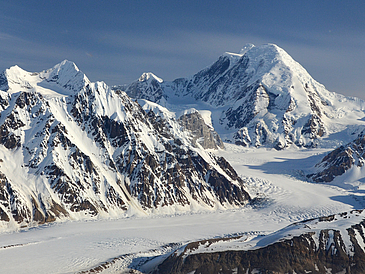In the study, the climate geographer Professor Ben Marzeion and his team compare 11 glacier models, 10 climate models, and four scenarios of future greenhouse gas emissions together with 15 other international research institutes. Global glacial melting in the 21st century was also predicted and the role of uncertainty of various sources was determined. The result: If ambitious measures for the reduction of greenhouse gas emissions are quickly implemented, around 18 percent of today’s glacial ice mass will melt by the end of the 21st century. If the greenhouse gas emissions continue to rise, it will be around 36 percent. Many of the glacial regions available today would then be practically ice-free at the end of the 21st century. The aim of the study is to make more precise global projections of glacial melting possible.
How Do Melting Glaciers Contribute to the Rise in Sea Level?
Despite the fact that glaciers only hold a mere fraction of the ice on the planet – the ice sheets in Greenland and the Antarctic together hold around 100 times as much ice – their meltwater is responsible for around a quarter of the current rise in sea level. It is, however, uncertain how it will contribute to the sea level rise in the future. The study is now aiming to determine the sources of uncertainty and the size of the individual uncertainty factors. This will provide starting points for precise prognoses in the future.
“There are various causes for the uncertainty of the projections regarding the loss of glacial mass,” explains Professor Marzeion. These especially include the incertitude surrounding the future emissions of greenhouse gases, imprecision of the utilized models, but also the natural variability of the climate system.
“In the coming decades, the glacier models themselves are the largest source of projection uncertainty,” explains the climate researcher. However, the lack of knowledge concerning the future emissions will become more significant in the middle of the 21st century: Our decision to realize climate protection goals or not is decisive for the size of glaciers in the year 2100.
Ben Marzeion is leading the underlying project (Glacier Model Intercomparison Project) together with Regine Hock from the University of Alaska Fairbanks, Alaska. The current publication is being supported by the American Geophysical Union as a “Research Spotlight”.
Further Information:
https://agupubs.onlinelibrary.wiley.com/doi/full/10.1029/2019EF001470
Contact:
Prof. Dr. Ben Marzeion
Institute of Geography
MARUM - Center for Marine Environmental Sciences
Email: ben.marzeionprotect me ?!uni-bremenprotect me ?!.de

